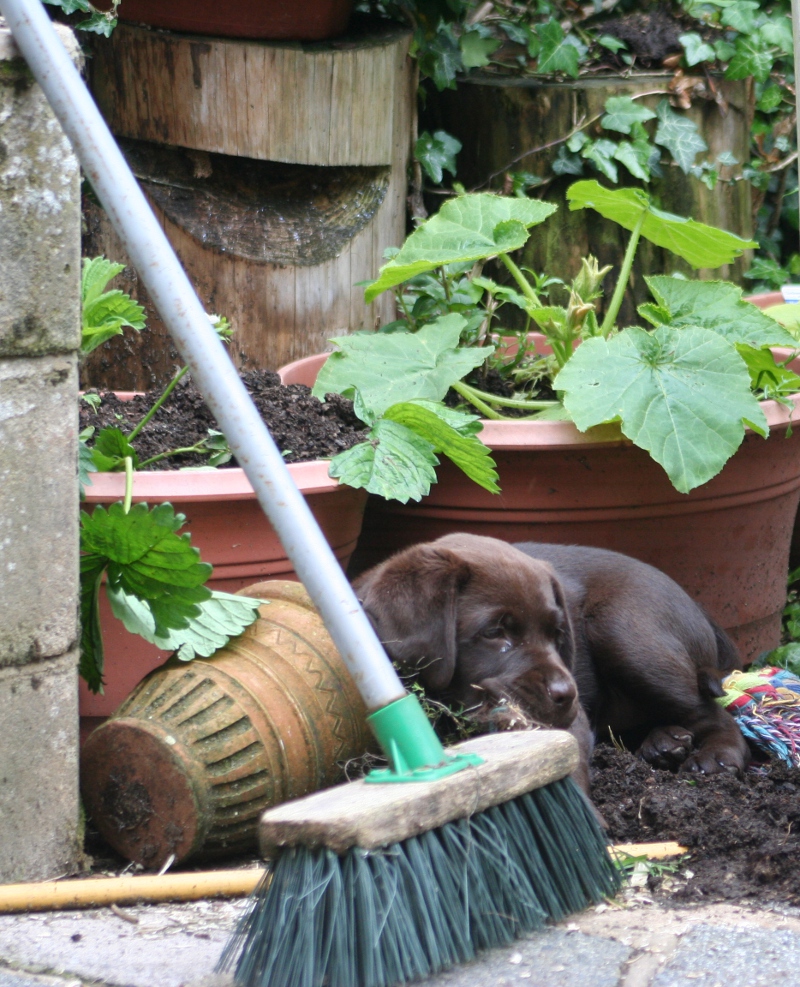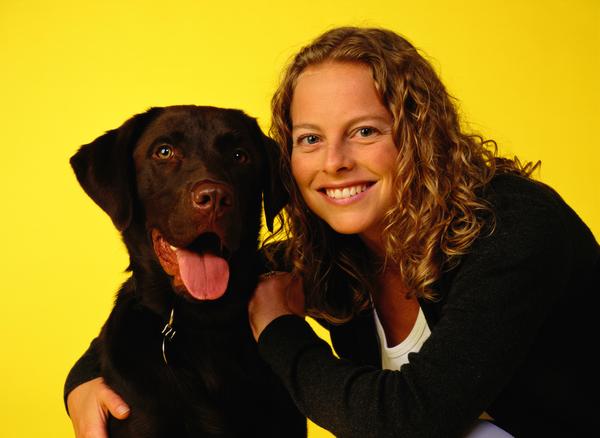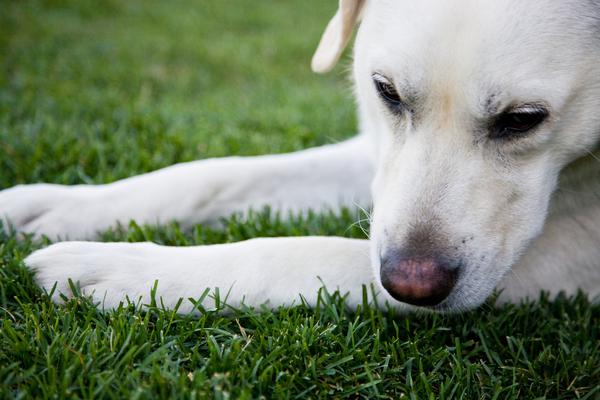There is nothing puppies enjoy more than a bit of ‘freestyle’ gardening. Most young Labradors think that a rose bush looks a lot better when it has been uprooted and dragged around the garden a few times. And of course, digging up your prize carrots is always a good way for any Labrador puppy to start the day. This can come as quite a shock to a first time Labrador owner. The good and the naughty! Read more…
Author: Sandra Hutchinson
We have had a few posts lately in the forum from people concerned about side effects. Puppies and older dogs receive a number of regular medical treatments throughout their lives, which include routine vaccinations and treatments for internal and external parasites. And it is only natural to be concerned if your labrador puppy gets sick after being given one of these treatments. Do worm medicines and vaccinations cause side effects? The simple answer here is yes. Read more…
The golden retriever is medium-sized domestic dog. It gets its name from the flat or wavy golden fur coat. The dog is popular family pet due to its kind and friendly nature towards humans. It may be difficult to tell the difference between a male and female. The differences are in physical features and behavior. There is a slight difference between the height of male and female golden retriever. The female grows approximately 20 to 22 inches tall. Read more…
‘Silver’, ‘charcoal’, and ‘champagne’ are not recognised as colours existing in the Labrador Retriever. The only recognised colours are black, yellow, and chocolate. The original St. John dogs, brought from New Foundland to England in the early 1800s, were black, and to improve the breed several other breeds were introduced, like Golden Retriever, Chesapeake Bay Retriever, and Flatcoat Retriever. Although black has been the favorite colour for many decades, yellows were accepted in the early 1900s. Read more…
Animals for the disabled are called service dogs. The Americans with Disabilities Act (ADA) defines a service dog as a dog trained to provide assistance to an individual with a disability. Service dogs include assistance, hearing and guide dogs. Any breed of dog can be employed since the dog’s temperament is the most important determining factor. Retrievers possess the vital skills and talents required as service dogs, and smaller breeds are used as hearing dogs. Read more…
Breeding your Labrador retriever can be exciting for the whole family. Labs come in three colors: yellow, black and chocolate. Your expectant litter may contain puppies in all varieties. The exception is when both the mother and father are yellow; in that case, the puppies will also be yellow. Screening for Pregnancy Before breeding your Labrador, perform a variety of tests to ensure there are no health defects that can be passed on to the puppies. Read more…
Choosing between a Labrador Retriever and a flat-coated retriever is difficult because the two breeds share a great deal in common. Both are good-natured, intelligent, high-energy, and athletic canines. Although the final choice might come down to what you plan to do with your dog, you are unlikely to go wrong with either breed. Appearance The Lab retrievers and the flat-coated retrievers are similar in size, but there are some differences between the two breeds. Read more…
Whether you are looking for a hunting dog or family pet — or a combination of both — the Labrador retriever and English springer spaniel both fill the bill. They are both athletic, versatile, good-natured canines who love their people. The springer, with his longer, wavier coat, requires more grooming than the short-haired Lab. If size is a consideration, there is a difference in the mature height and weight of these two amazing breeds. Sporting Dogs Read more…
Kind, friendly and outgoing, the Labrador retriever’s irrepressibly sweet disposition and effervescent personality are as integral to the dog’s nature as the famous “otter tail” is to his body. The maturation rate of these puppies falls in the middle of the road. Labrador retrievers typically reach adult heights between their 12th and 18th months. Most continue filling out and muscling up until they’re 2 years old. Your Lab has an estimated life expectancy of 12 to 14 years. Read more…
Intelligent, friendly, and eager to please, Labrador retrievers have a long history of helping humans, and humans love them for it. According to the American Kennel Club, as of 2014, Labrador Retrievers are the most popular breed in the United States, and their combination of brains and a pleasant demeanor are to thank. Their intelligence is no accident, though – it is partially the result of a long tradition of hard work and training. Born to Fetch Read more…










